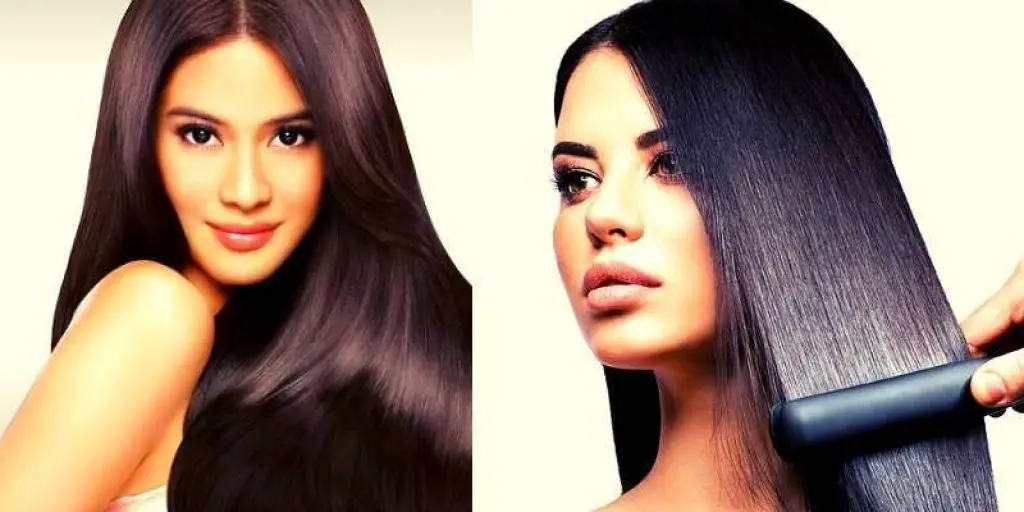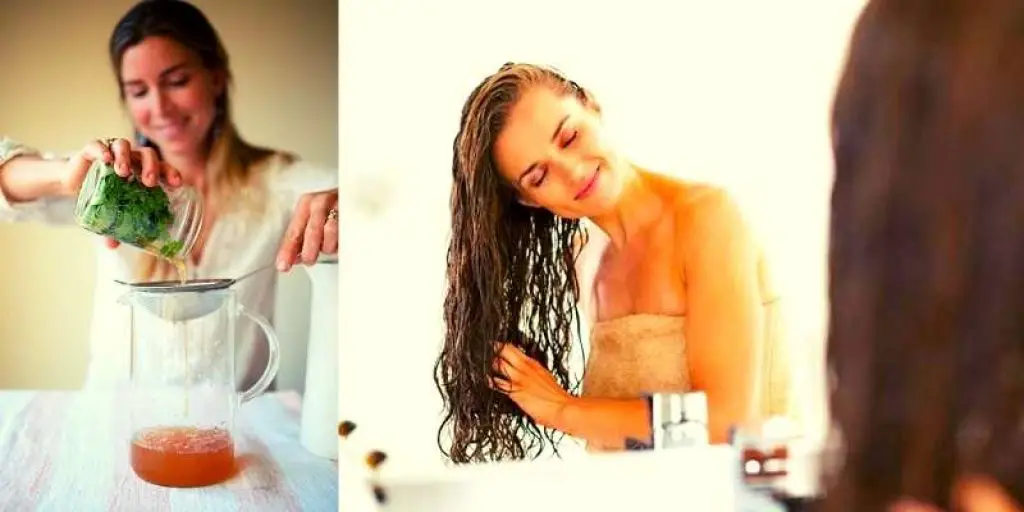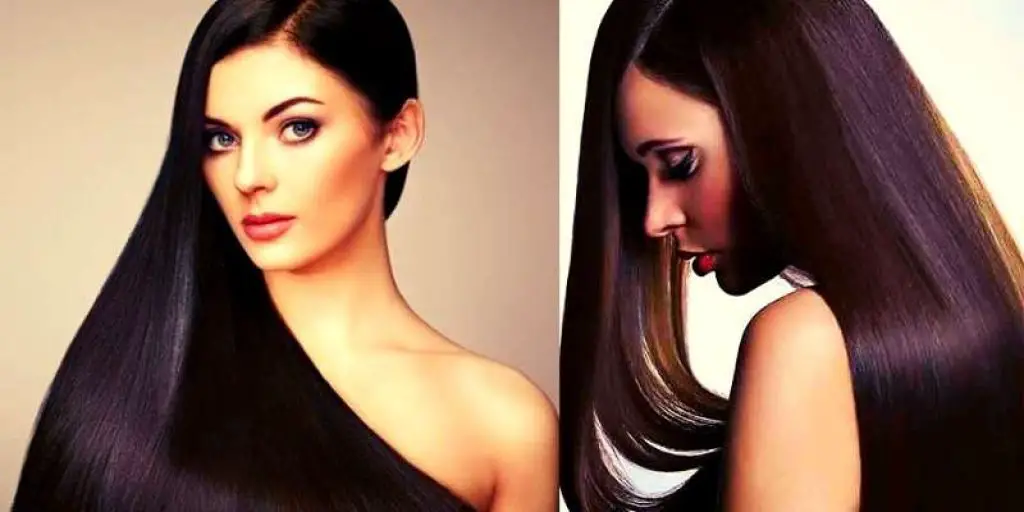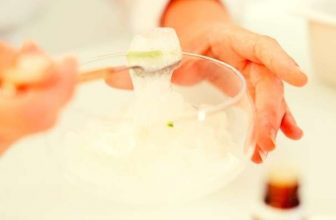
Is Smoothening Harmful For Hair? | All About Hair Smoothening
Your hair is the crowning glory of your face, and it has a profound effect on how you appear. Specific individuals are blessed with naturally silky and silky hair that is effortless to style, while others struggle with dry, frizzy hair that is difficult to keep in place.
Things like humidity, pollution, heat, and genetics can all contribute to the problem when dealing with curly hair.
While there are numerous ways to improve hair texture at home, nothing beats the immediate results of a hair smoothing salon treatment. This is a straightforward solution, but it does have some drawbacks.
What Is Hair Smoothening?
Hair is composed of keratin, a protein that serves as the primary structural component of hair. Cysteine, also found in other proteins, is the most abundant amino acid in keratin.

The keratin structure is held together by disulfide bonds, which connect one cysteine atom to another. The arrangement of these keratin filaments and the number of disulfide bonds within them determine the structure and texture of your hair.
Straight, curly, and wavy hair are the most common varieties.
A smoothing treatment for the hair is a cosmetic procedure that reduces its frizz and dryness, leaving it shiny and sleek.
To improve unruly hair’s basic structure and appearance, this treatment restores the hair’s keratin. This procedure is about $350 and takes about three hours to complete in the United States.
Hair Smoothening Is Different From Hair Straightening
Hair straightening and hair smoothening treatments make hair strands smoother, silkier, and shinier.

However, the chemicals used in hair straightening are distinct from those used in hair smoothing and considerably stronger. Hair smoothing has a shorter lasting effect than chemical straightening as a result.
Remember that hair straightening can be short-term or long-term, depending on the method you use. Permanent results can be achieved using chemical solutions known as relaxers instead of straightening tools.
There are two types of relaxers:
Alkaline And Non-Alkaline
The alkaline relaxers break down the disulfide bonds that hold the keratin filaments together and give your hair its basic shape. When you use a flat iron to straighten your hair, heat is released, causing the keratin filaments to reshape or rearrange.
Non-alkaline relaxers weaken the hair’s cysteine bonds instead of causing the entire keratin fiber to break down.
The following are the steps involved in hair smoothing:
A chemical solution or relaxer containing formaldehyde-releasing compounds is used to soak the hair (FRCs).
It’s time to wash the hair. The water straightens the keratin fibers concerning one another.
The chemical relaxer, which contains FRC, is applied to the hair from root to tip without ever coming into contact with the scalp.
Straightening irons are used to straighten hair. When exposed to heat to straighten hair, FRCs release formaldehyde, which bonds keratin fibers together. The hair glows when light strikes these newly arranged keratin fibers.
However, straightening hair completely flattens and straightens extremely curly or wavy hair to the ends are pointed. This results in strands that are manageable and soft without any pointy ends. Hair smoothing, as opposed to hair straightening, results in a more natural-looking appearance.
Hair straightening, on the other hand, is more damaging to your hair. In addition, hair conditioning agents are frequently included in relaxers to improve the final result and reduce hair damage.
Temporary, but with proper post-treatment hair care, the effects of hair smoothing can last for several months. The treated hair strands will remain pin straight after chemical straightening, but they will gradually grow out.
3 Most Used Hair Smoothening Home Remedies
When you consume a high protein, vitamin-A, and biotin diet, you promote keratin production from the inside, improving your hair’s health and balancing your dosha levels.
1. Hot Oil Treatment
To balance aggravated Vata levels, which dehydrate your scalp and hair, you should use Udaka Vaha Srotas (channels that regulate water metabolism). These keep your hair hydrated, smooth, and shiny.

An Ayurvedic practice to smoothen your hair’s texture is to use hot oil treatment with herbs that work on Udaka Vaha Srotas.
2. Hair Rinse With Herbs
A. Hibiscus Rinse
Put some hibiscus leaves and flowers in water for a few minutes and blend them in a grinder. After rinsing with this hibiscus solution for 10 to 15 minutes, Wash your hair with water.

It will result in super soft and silky hair if you do it once a week.
B. Apple Cider Vinegar Rinse
In 2 cups of water, add 2 tsp apple cider vinegar. Rinse your hair with this solution once or twice a month for healthy hair with no frizz.
C. Aloe Vera Rinse
In a blender, combine 2 teaspoons of aloe vera gel and 2 cups of water to make a smooth solution.Rinse your hair with this solution once a week for smooth and shiny hair. Dandruff can also be effectively treated by aloe vera.
D. Coconut Water Rinse
In a spray bottle, combine 4 teaspoons coconut water, 2 teaspoons jojoba oil, 2 teaspoons aloe vera gel, and shake to mix well. To ensure your hair remains healthy and damage-free, spray the solution into your hair after washing it with an Ayurvedic shampoo.
Moreover, coconut water contains many vitamins, minerals, and amino acids that help keep your hair follicles nourished, promoting keratin synthesis.
3. Hair Smoothening Packs
A. Banana-Avocado Mask
Combine the pulps of 1 banana and 1 avocado. 1 tsp wheat germ oil and 1 tsp rose oil should be added to the mixture and blended into a fine paste. Use small amounts at a time to massage the paste into your hair. Using an Ayurvedic shampoo, wash it off after 30 to 45 minutes.

You can restore your hair’s protein with banana amino acids.
D. Yogurt-Egg Mask
2 tbsp of yogurt and 1 egg white should be blended well together. Wash your hair with an Ayurvedic shampoo after 45 minutes after applying this mixture. For the best results, do this at least once a week.
Your hair will be exceptionally soft due to the proteins in egg and yogurt.
E. Coconut Milk-Hibiscus Mask
Make a fine paste with coconut milk and hibiscus powder. Aloe vera gel and honey can also be added to the mixture. The mixture can be applied to the hair. Wash it off with an Ayurvedic shampoo after about 30-40 minutes.
According to Ayurveda, coconut milk, rich in protein and amino acids, is also helpful for Udaka Vaha Srotas. This mask can prevent hair breakage and split ends from occurring.
3 Common Types Of Hair Smoothing Treatments
The term “keratin hair treatment” refers to any hair treatment or procedure that uses the keratin protein to manipulate the hair. The keratin fibers in hair can be rearranged in various ways to improve the texture of the hair.
Chemical relaxers break disulfide bonds in the hair before straightening it with a flat iron for a sleek finish in all of these procedures. Many different chemical relaxers are available, and each has its own set of side effects. Some muscle relaxants are more potent than others, resulting in longer-lasting effects.
A few of the most popular methods for smoothing hair are listed below.
1. Brazilian Blowout
The use of methyl glycol or formalin chemical solutions to release formaldehyde vapors into the air during a Brazilian blowout (3), also known as an albumin hair treatment or hair Botox, is a standard part of this procedure.
In contrast to other chemical relaxers, this treatment can be used on bleached hair, otherwise incompatible.
2. Thermal Hair Conditioning
A glycolic acid derivative known as thioglycolate is the primary active ingredient in a chemical solution used in thermal hair conditioning or the Japanese straightening technique. Compared to other alkaline hair relaxers, this chemical solution has a much lower protein loss rate.
3. Non-Formaldehyde Hair Smoothening Treatments
Goldwell Treatments such as Kerasilk and Cezanne use chemical relaxers that don’t release formaldehyde and are safer for hair. Glycolic acid (4) and sericin, a silk protein, relax.
It’s not as smooth and straight as a traditional formaldehyde-based treatment because of the absence of formaldehyde. The upside is that they make your hair softer and silkier without causing any adverse reactions.
However, research has shown that some hair smoothing procedures release a formaldehyde chemical, but in tiny amounts. Please make sure you and your stylist have a thorough discussion about the treatment before committing to it.
As a cautionary note, many people are unaware of the harmful effects of formaldehyde on their health when they use relaxers that contain this chemical.
Educate yourself about the product’s benefits and drawbacks before deciding to use it yourself. Get it done by a hairdresser to avoid unwanted side effects and ensure the best results.
The Hair Smoothening Procedure
The following steps are involved in the hair smoothing procedure:
- After shampooing and rinsing, the hair is given a thorough conditioning treatment.
- Chemical relaxer creams and solutions are applied very carefully to the hair, careful not to get any on the scalp.
- The relaxer is applied to the hair and allowed to sit for 20–30 minutes before being rinsed out with warm water to complete the process.
- Blow-drying is used to dry the hair.
- Stylists use straightening irons to straighten the strands of hair.
- Curling irons use a cream to seal in the straightening results.
- Before the final wash, the cream should only be left on the hair for 10–15 minutes.
Side Effects Of Hair Smoothening
It is safe to use non-formaldehyde chemical relaxers containing hydroxides and thioglycolate, as long as they are not applied to the scalp directly. There are, however, many drawbacks to using FRCs. When heated, these chemical relaxers release formaldehyde gas into the atmosphere, as previously discussed.
Hairstylists and clients who are exposed to formaldehyde may experience the following side effects:
- Burns and blisters on the scalp.
- thinning of the hair
- Hair thinning or balding
- Dandruff
- Split ends that are too numerous.
- Headaches
- Nausea
- Tightness in the chest
- Burning and itchy eyes
- Irritation of the nose and the throat
When used at high concentrations, formaldehyde can cause cancer. Some people who had formaldehyde-based hair smoothing treatments developed asthma due to this. Therefore, the Environmental Working Group (EWG) and OSHA have declared the following hair smoothing treatments to be potentially harmful.
How To Avoid Hair Smoothing Side Effects?
Salon stylists should follow OSHA’s recommendations to minimize hair smoothening risks and side effects.
- If the chemical relaxer is left on your hairline for too long, it can irritate the scalp. Because of this, the relaxer is applied to the hairline at the end of the process, after all of your hair has been covered.
- The use of scalp barriers reduces the likelihood of scalp irritation.
- Formaldehyde fumes can cause eye irritation if you don’t wear eye shields to protect your eyes.
- Toxic fumes are released when chemical relaxers are heated with a flat iron. As a result, the salon must be adequately ventilated to ensure adequate airflow and the removal of harmful fumes.
- During the procedure, flat irons and blow dryers should be kept at a low temperature.
- Keep an eye on the formaldehyde levels in the salon with a Consumer Sampling and Analysis Kit.
- Personal protective equipment should be provided to the salon staff during the smoothening treatment. This also includes aprons, gloves, and eyewash stations.
- There should be annual refresher training for hairdressers to handle these toxic chemicals properly.
Who Should Avoid Hair Smoothening?
Smoothing your hair is not advised if you have one of the following conditions:
The chemicals in smoothening treatments make fine or sparse hair more susceptible to breakage and shedding. People with fine hair or a lack of volume should avoid this treatment because it can cause further damage.
Although hair smoothening can improve the texture of wavy or frizzy hair, it is ineffective on thick or curly hair.
For pregnant or breastfeeding women, the chemicals used in the procedure may be absorbed into their bodies and passed on to their children via their blood or breast milk. This is a legitimate concern. If you have any concerns about the safety of chemical hair smoothing during pregnancy or lactation, it is best to wait until your period has ended before using it.
Alternatives To Hair Smoothening
Hair can be softened and nourished with many natural ingredients without the risks of chemical treatments.
Chemical hair smoothening can alter the texture and appearance of your hair, but it does neither of these things to your hair’s structure nor does it last as long as nonchemical methods.
These natural hair remedies are not only free of harmful chemicals but are also highly affordable.
- Mayonnaise and eggs are a classic combination.
- Extracted aloe vera gel that is still fresh
- Mashed up banana
Hair Straightening VS Hair Smoothing
Wavy or curly hair is usually associated with beautiful hairstyles, but curly hair can also be tricky to keep clean and style.
If you choose to tame your tresses into a sleek look, make sure to protect your curls by brushing, washing, and moisturizing them regularly. When your hair is dry, apply a hair smoothing or flat iron to achieve the right look for your curly hair.
How Long Does Hair Smoothening Last?
You can use a hair smoothening product daily or every other day to keep your hair smooth and glossy, but expect to see results in about three months. Your hair will feel smooth and have a healthy shine, and you’ll have less frizz in the morning.
Your hair will look great even if it is a little frizzy. It may be easier to see the difference if you have fine hair.
Hair Smoothening While Breastfeeding – Is It Safe?
In no way, shape, or form can chemicals used in hair treatments be transmitted to nursing infants via breast milk.
As a result, it is preferable to delay chemical hair smoothing treatments until the end of the breastfeeding period.
On the other hand, Ayurvedic herbal treatments can be used whenever you like because of their exceptional and natural smoothing properties.
Who Should Avoid Hair Smoothening?
The protein bonds between hair strands are broken by hair straighteners, resulting in hair loss and frizz. Using heat too long at a high temperature for too long can damage hair, so you should avoid products that use high temperatures for too long, such as flat irons and curling rods, which have a maximum temperature of 450°F/232°C.
Your hair might need a few attempts if heat appliances and styling products have damaged it.
Is Smoothening Safe For Hair?
A hair smoothening treatment in the salon should not be done more than three times a year since your hair becomes brittle and more likely to break each time. You should therefore limit your treatments and avoid them as much as possible.
Does Smoothening Cause Hair Fall?
Are you aware that the most common side-effect of hair smoothening is chronic hair loss? Hair follicles become weak and detach at the roots when exposed to heat and harmful chemicals during treatment. In turn, this leads to excessive hair loss.
Can I Apply Oil After Smoothening?
According to researchers, one shouldn’t apply hair oil for at least two weeks after smoothening. For at least 1000 days, it is essential not to use any hair oil. It is recommended that you avoid applying anything to your scalp and hair for at least a month. One drop of serum is equivalent to three drops of oil.
Does Smoothening Make Hair White?
Hair smoothening is a chemical treatment that may affect the health of your hair, causing it to turn grey. Take good care of your diet and use heat protectants on your hair if you have your hair smoothened frequently.
Can I Comb My Hair After Smoothening?
After three days, shampoo and condition your hair. Leave the air conditioner on for a few minutes longer than usual. Your hair will dry out if you wash it with hot water. Make use of a wide-toothed hair comb to detangle your hair.
Is Smoothening Good For Very Thin Hair?
The smoothening process works very well on thin hair.
Can We Apply Curd On Smoothened Hair?
The curd’s high vitamin B5 and D content helps to prevent dandruff and promotes hair health. Curd also smooths frizz and promotes hair growth when combined with eggs, mayonnaise, honey, and banana.
Can I Apply Egg On Smoothened Hair?
Only use shampoos that are formulated for straight hair. – Every once in a while, you can apply natural hair masks made with aloe vera gel, curd, eggs, or olive oil.
Will Natural Hair Grow Back After Smoothening?
It is impossible to restore curly hair that has been straightened. The change is permanent and irreversible. Until your hair is long enough to chop off the straight ends, you will have to be patient for months.
What Are The Benefits Of Hair Smoothing?
The purpose of a hair smoothing treatment is to remove frizz and dryness from the hair, so it looks sleek and shiny. This is accomplished by restoring keratin to unruly hair, enhancing its basic structure and appearance.
Should You Straighten Or Smoothen Your Hair?
The popularity of straightening hair has increased over time. Many women use flat iron heated tools to achieve a perfectly smooth and sleek appearance. However, curly hair is more difficult to maintain and care for. It needs to be styled differently since it takes longer to dry and moisturize.
Therefore, Even though hair smoothing treatments are extremely popular, you should educate yourself on the benefits and drawbacks of getting one before committing to it. This way, you won’t look back and regret your decision.
Before resorting to chemical smoothening, there are numerous natural alternatives that you can experiment with.
To make an informed decision about hair smoothening, you must know all the risks and precautions.






